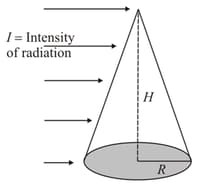Embibe Experts Solutions for Chapter: Dual Nature of Matter and Radiation, Exercise 2: Exercise - 2
Embibe Experts Physics Solutions for Exercise - Embibe Experts Solutions for Chapter: Dual Nature of Matter and Radiation, Exercise 2: Exercise - 2
Attempt the free practice questions on Chapter 32: Dual Nature of Matter and Radiation, Exercise 2: Exercise - 2 with hints and solutions to strengthen your understanding. Alpha Question Bank for Engineering: Physics solutions are prepared by Experienced Embibe Experts.
Questions from Embibe Experts Solutions for Chapter: Dual Nature of Matter and Radiation, Exercise 2: Exercise - 2 with Hints & Solutions
The work function of a certain metal is . When a monochromatic light of wavelength is incident such that the plate gains a total power . If the efficiency of photoelectric emission is and all the emitted photoelectrons are captured by a hollow conducting sphere of radius already charged to potential , then neglecting any interaction between plate and the sphere, expression of potential of the sphere at time is,
Radiation pressure on any surface (for a given intensity):
The radiation force experienced by body exposed to radiation of intensity , assuming surface of body to be perfectly absorbing is :

Which one of the following statements is NOT true for de Broglie waves?
The photoelectric threshold wavelength of tungsten is . The energy of electrons ejected from its surface by ultraviolet light of wavelength is
Radiation from a hydrogen discharge tube (energy of photons ) goes through a filter which transmits only waves of wavelength greater than and is incident on a metal of work function . If stopping potential is . Find the value of
Photoelectric effect supports particle nature of light because
Select the correct alternative(s):
When photons of energy strike the surface of a metal , the ejected photo electrons have maximum kinetic energy and de Broglie wave length . The maximum kinetic energy of photo electrons liberated from another metal by photons of energy is . If the de-Broglie wave length of these photo electrons is , then:
